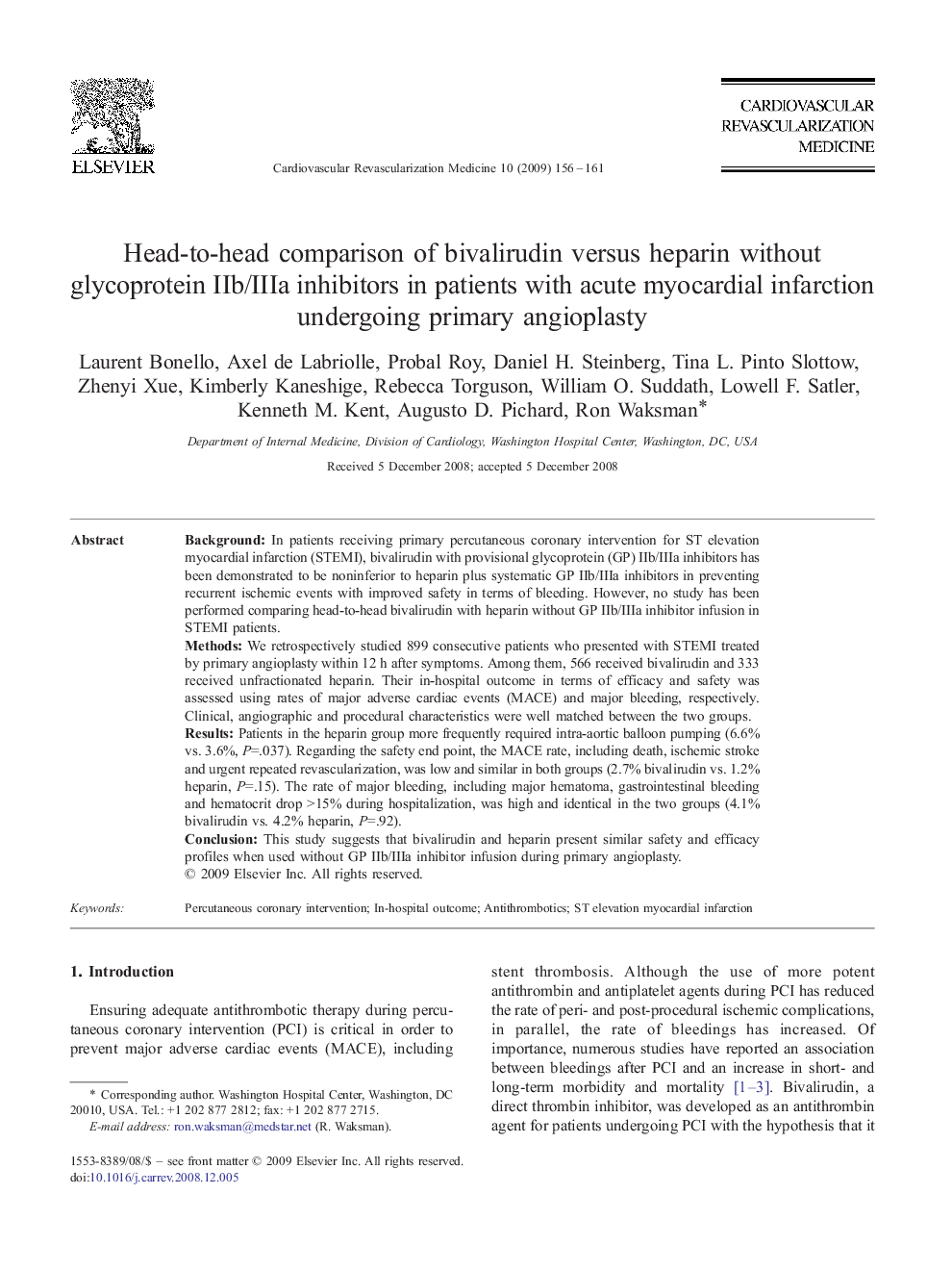| Article ID | Journal | Published Year | Pages | File Type |
|---|---|---|---|---|
| 2837652 | Cardiovascular Revascularization Medicine | 2009 | 6 Pages |
BackgroundIn patients receiving primary percutaneous coronary intervention for ST elevation myocardial infarction (STEMI), bivalirudin with provisional glycoprotein (GP) IIb/IIIa inhibitors has been demonstrated to be noninferior to heparin plus systematic GP IIb/IIIa inhibitors in preventing recurrent ischemic events with improved safety in terms of bleeding. However, no study has been performed comparing head-to-head bivalirudin with heparin without GP IIb/IIIa inhibitor infusion in STEMI patients.MethodsWe retrospectively studied 899 consecutive patients who presented with STEMI treated by primary angioplasty within 12 h after symptoms. Among them, 566 received bivalirudin and 333 received unfractionated heparin. Their in-hospital outcome in terms of efficacy and safety was assessed using rates of major adverse cardiac events (MACE) and major bleeding, respectively. Clinical, angiographic and procedural characteristics were well matched between the two groups.ResultsPatients in the heparin group more frequently required intra-aortic balloon pumping (6.6% vs. 3.6%, P=.037). Regarding the safety end point, the MACE rate, including death, ischemic stroke and urgent repeated revascularization, was low and similar in both groups (2.7% bivalirudin vs. 1.2% heparin, P=.15). The rate of major bleeding, including major hematoma, gastrointestinal bleeding and hematocrit drop >15% during hospitalization, was high and identical in the two groups (4.1% bivalirudin vs. 4.2% heparin, P=.92).ConclusionThis study suggests that bivalirudin and heparin present similar safety and efficacy profiles when used without GP IIb/IIIa inhibitor infusion during primary angioplasty.
